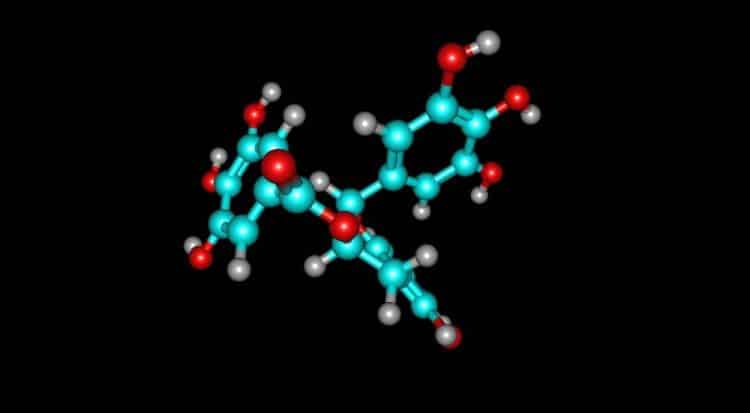The recovering of phenolic compounds from plant extracts is particularly important due to their natural antioxidant activity, UV-protection properties and antimicrobial activity. Polyphenols are plant secondary metabolites abundant in fruits, cereals and vegetables. There are different classes of polyphenolic compounds such as phenolic acids, flavonoids, stilbenes, and lignans. The great diversity in polarity, polymerization, conjugation and matrix interactions changes with plant maturation, environmental parameters (climate, soil quality, topography) and cultivar. [1]
The large use in pharmaceutical, cosmetic and food supplement industries encourages the advancements of polyphenolics extraction techniques in order to succesfully isolate them. [2] Polyphenolic compounds are generally high molecular weight molecules responsible for the colour, bitterness, oxidative stability, astringency of plants and they contribute to plant protection and defence against pathogens and environmental changes. [3] Their intakes from fruit, vegetables, seeds, and nuts have been associated with lower risks of chronic and age-related degenerative diseases. [4]
The health promoting benefits and organoleptic properties of these compounds are associated with the particular profile of the final product, hence the extraction process is the critical step to obtain an efficient recovery of the desired polyphenolic fractions.
Depending on the number of hydroxyl groups contained in the molecule, polyphenolic lipophilicity can change. Because of their phenolic features, these compounds are more hydrophilic than lipophilic and can be extracted by solvents like ethanol, methanol, acetonitrile, acetone or their mixtures with water. [5]
Conventional extraction methods include Soxhlet extraction, percolation, decoction, heat reflux extraction and maceration. [6] Modern extraction techniques have been developed to overcome common problems encountered with traditional extraction methods such as high extraction temperatures, high energy consumption and long processing time. Supercritical fluid technologies, ultrasound-assisted extraction, microwave-assisted extraction, ultrasound-microwave-assisted extraction and subcritical water extraction have been investigated to isolate phenolic compounds, with shorter extraction times and reduced solvent consumption. [7] It has been proved that supercritical extraction using solvents such as CO2 among others is an effective method to selectively isolate antioxidants from plants. By tuning solvent pressure, temperature, flow rate, sample volume and adding a co-solvent it is possible to increase the solubility of certain compounds and adjust the composition of the final extract. Moreover, because the supercritical fluid extraction is performed in a closed container isolated from light and oxygen and it is perfomed at mild temperatures, it is possible to minimize the degradation of the polyphenolic compounds and to reduce the loss of heat-sensitive components. Another benefit of supercritical fluid extraction is that the separation of the extraction solvent from the extract is easy due to the fluid expansion in the extractor vessel outlet. [8]
Interestingly phenolics that can’t be extracted with conventional methods can be obtained through pretreatment of the plant matrix with degrading enzymes such as pectinases, cellulases and hemicellulases, capable of disrupting the plant cellular structure and to enhance the permeability and extractability of the target compounds. [1] The complete recovery of plant by-products is still a goal to be achieved and future innovative extraction developments have to be based on sequential workflows in order to ameliorate the extraction capacity and efficiency from plants and agro-food residues.
References:
[1] Emilio Gil-Martín et al. Influence of the extraction method on the recovery of bioactive phenolic compounds from food industry by-products, Food Chemistry, Volume 378, (2022), https://doi.org/10.1016/j.foodchem.2021.131918 [Journal impact factor = 9.231] [Times cited = 9 ]
[2] Francesca Giampieri et al. Influence of the extraction method on the recovery of bioactive phenolic compounds from food industry by-products, Food Chemistry, Volume 378, (2022); https://doi.org/10.1016/j.foodchem.2021.131918. [Journal impact factor = 9.231 ] [Times cited = 8 ]
[3] Pandey KB et al. Plant polyphenols as dietary antioxidants in human health and disease. Oxid Med Cell Longev. 2009 Nov-Dec;2(5):270-8. doi: 10.4161/oxim.2.5.9498. [Journal impact factor = 7.310] [Times cited = 4166]
[4] Hano C. et al. Plant Polyphenols, More than Just Simple Natural Antioxidants: Oxidative Stress, Aging and Age-Related Diseases. Medicines. (2020);7(5):26. doi: 10.3390/medicines7050026. [Journal impact factor = 1.889] [Times cited = 64]
[5] Tsao R. Chemistry and Biochemistry of Dietary Polyphenols. Nutrients. 2010;2:1231–1246. doi: 10.3390/nu2121231 [Journal impact factor = 5.719] [Times cited = 2173]
[6] Sridhar A, Ponnuchamy M, Kumar PS, Kapoor A, Vo DN, Prabhakar S. Techniques and modeling of polyphenol extraction from food: a review. Environ Chem Lett. 2021;19(4):3409-3443. doi: 10.1007/s10311-021-01217-8. [Journal impact factor = 13.51] [Times cited =2]
[7] Brglez Mojzer E. et al Polyphenols: Extraction Methods, Antioxidative Action, Bioavailability and Anticarcinogenic Effects. Molecules. (2016); 21(7):901. doi: 10.3390/molecules21070901. [Journal impact factor = 4.927] [Times cited = 687]
[8] Farías-Campomanes, A.M. et al. Supercritical fluid extraction of polyphenols from lees: overall extraction curve, kinetic data and composition of the extracts. Bioresour. Bioprocess.2, 45 (2015). https://doi.org/10.1186/s40643-015-0073-5 [Journal impact factor = 4.485] [Times cited = 27]
Image: https://www.bigstockphoto.com/it/image-416414266/stock-photo-epigallocatechin-gallate-or-egcg-is-the-ester-of-epigallocatechin-and-gallic-acid%2C-and-is-a-type-of











